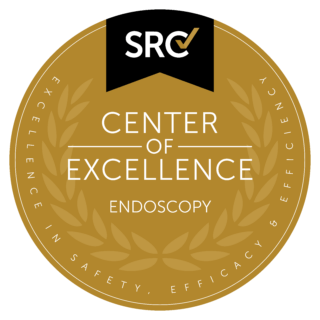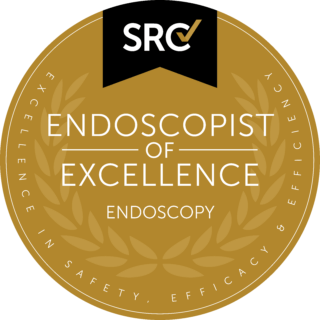Endoscopic Ultrasound to Assess the Cause of Recurrent Pancreatitis
If a patient is suspected of having pancreatic disease, his/her physician in many cases recommends that the patient undergoes an endoscopic ultrasound (EUS).
EUS is an endoscopic examination that can be used to evaluate different types of diseases that can occur in the pancreas. The procedure involves inserting a thin tube into the mouth, passing it through the stomach and into the first part of the small intestine. The tube has a small ultrasound probe on the tip which emits sound waves that bounce off on the surrounding structures –liver, stomach, pancreas, small intestine, and bile ducts- and then recaptured by the probe which converts them into images. This allows for your doctor to get detailed images of your pancreas since it is located next to the stomach and the small intestine.
The Target Area
Recurrent pancreatitis is inflammation of the pancreas that does not improve over time. The pancreas is responsible for making enzymes that help in food digestion. It also makes hormones which control the level of sugar in the bloodstream.
Recurrent pancreatitis can lead to permanent damage and scarring of the pancreas. Cysts and calcium stones may develop in the pancreas blocking the duct that carries the digestive juices and enzymes to the stomach. The blockage lowers the levels of pancreatic hormones and enzymes making it harder for the body to regulate blood sugar and digest food.
Symptoms of Recurrent Pancreatitis
Symptoms of recurrent pancreatitis tend to develop over time, and they include:
- Pain in the upper abdomen
- Nausea and vomiting
- Fatty, loose, pale stool
- Diarrhea
- Unexplained weight loss
- Shortness of breath
- Excessive fatigue and thirst
- Jaundice
- Pancreatic fluids in the abdomen
- Internal blockage
- Internal bleeding
Risks Associated with EUS
Risks associated with EUS are minimal and rarely occur, but they include:
- Pulmonary/cardiac complications during the procedure because of the general anesthesia used
- Perforation or bleeding in the GI duct
- Bleeding, infection, or acute pancreatitis due to FNA/FNB of the pancreas
Candidate for a EUS Procedure to Assess Cause of Recurrent Pancreatitis
EUS is an excellent procedure for evaluating pancreatic conditions such as:
- Chronic pancreatitis
- Acute pancreatitis
- Pancreatic cysts
- Pancreatic masses and tumors
- Autoimmune pancreatitis
EUS of the pancreas is performed on patients to evaluate abnormal findings on a MRI, CT scan, ultrasound of the abdomen, or for further investigations of abnormal blood tests such as elevated pancreatic enzymes (lipase and amylase) or elevated liver function tests.
A patient can also be referred to an EUS if the following are suspected:
- Inflamed pancreas
- Dilated bile duct
- Dilated pancreatic duct
- Presence of stones in the bile duct or pancreatic duct
- Recurrent episodes of acute pancreatitis
EUS Procedure
While preparing for EUS to assess the cause of recurrent pancreatitis you will be provided with certain instructions. Following these instructions minimizes the risks during and after the procedure. It is recommended that you avoid taking blood thinning medication a week before the procedure and do not eat or drink anything 8 hours before the procedure. Also disclose if you are taking any type of medications and if you have a history of heart or lung disease. You may need a letter of clearance from your cardiologist and lungs doctor to undergo EUS.
EUS to assess the cause of recurrent pancreatitis is done under general anesthesia as an outpatient procedure and takes about 20-45 minutes to complete.
The procedure is performed in the endoscopy room where you will lie down on a bed on your left side. Your vital signs will be monitored which include placing a blood pressure cuff on your arm, EKG leads on your chest, and an oxygen monitor on your finger.
Most patients do not experience any discomfort during the procedure as they are usually asleep. Once anesthesia kicks in, the procedure begins.
During the procedure, pancreatic biopsies can be obtained through fine need aspiration (FNA). This allows for the collection of tissue samples which are analyzed in the lab. EUS allows the physician to directly insert the special needles used in EUS scope at the exact target location of interest. FNA is mostly performed to evaluate the presence of cancer in masses or tumors of the pancreas. It is also used to evaluate pancreatic cysts in which sample fluid from the cysts is collected and sent to the lab for further analysis.
Once the procedure is finished, you are taken to the recovery room where you will be monitored for about an hour after you are awake.
You will discuss the results of the EUS with your physician and given further instructions and medication such as pain killers and antibiotics before being discharged.
–> Back to Endoscopic Ultrasound Overview


احجز موعدًا


